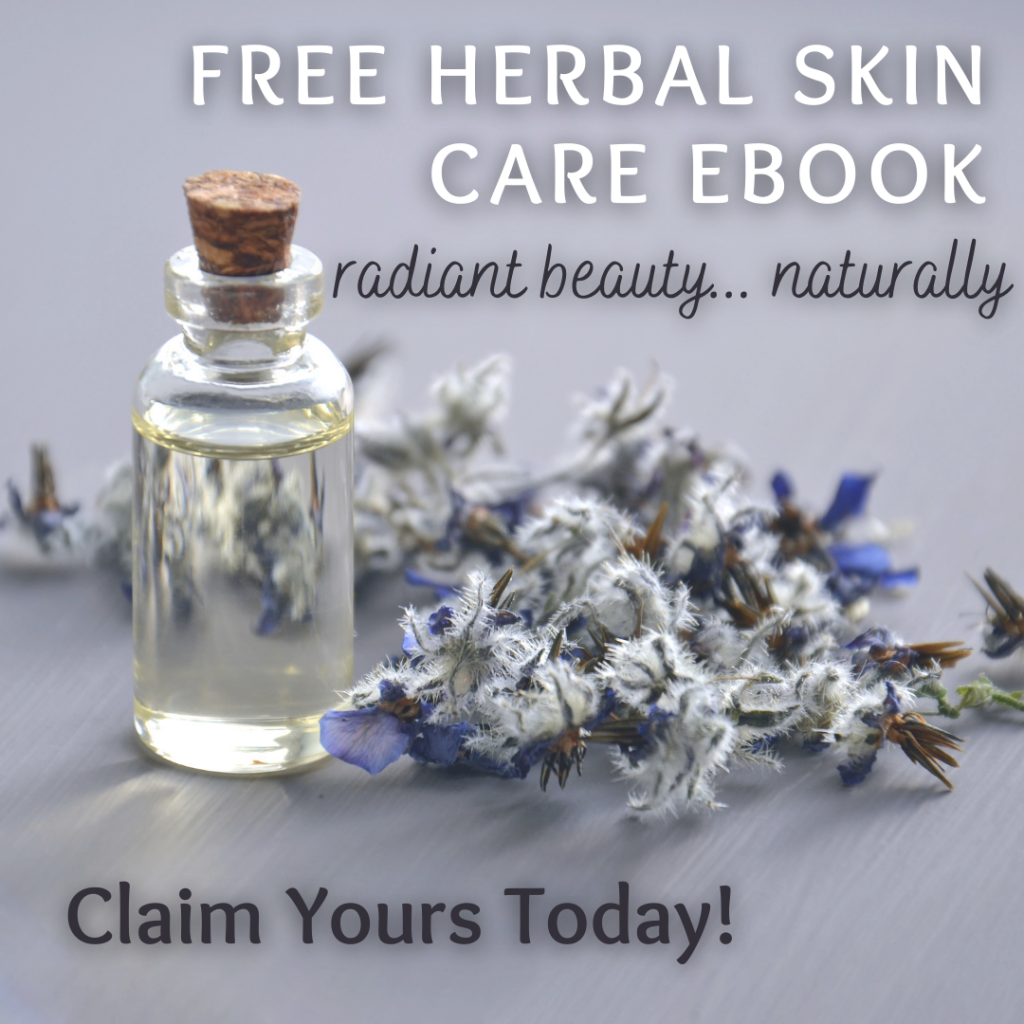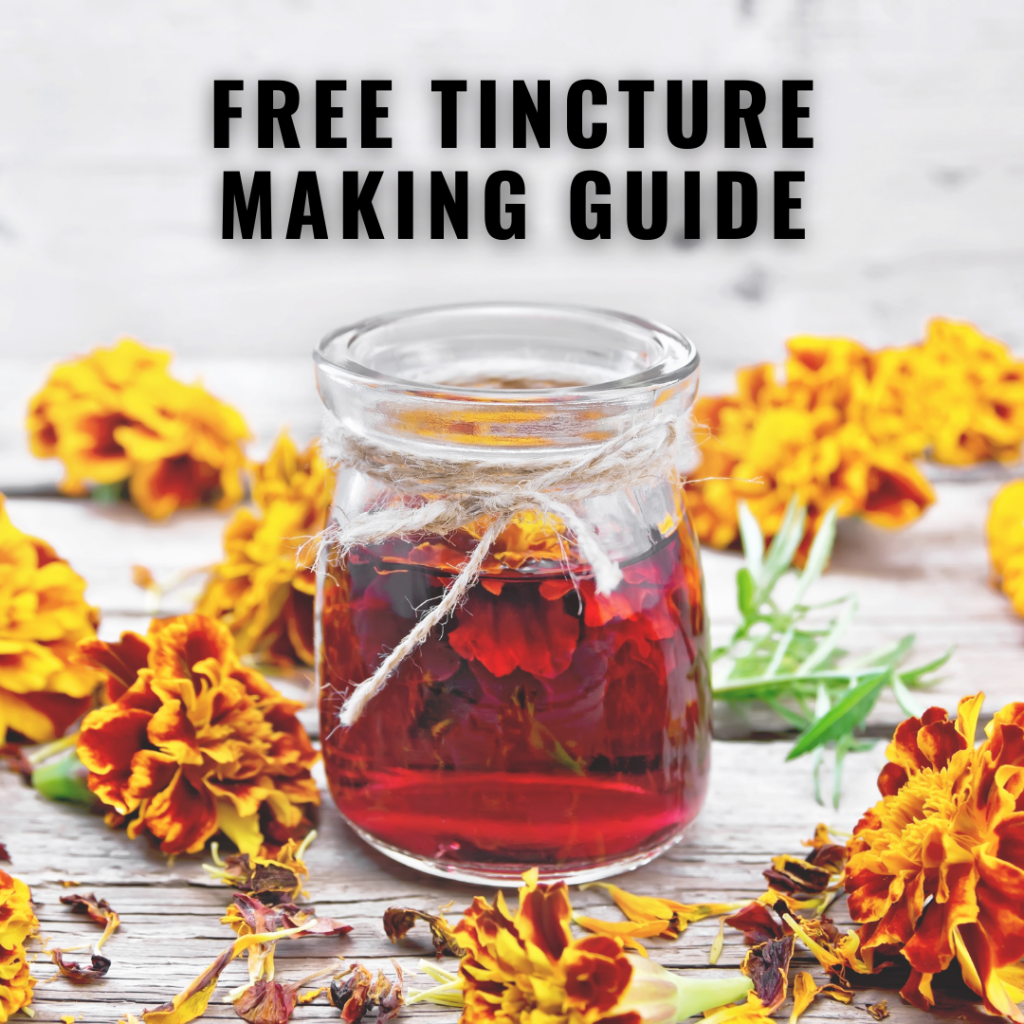My Calendula is in full bloom in my vegetable garden and it’s vibrant sunshiney colours are just calling out for a blog post! And of course I can’t resist sharing the wonderful medicine that grows all around us in the world.
While the topical healing powers of this plant made Calendula famous in the all-natural product world, today we’ll touch on all the areas in which marigold flowers shine.
And for my friends who are more interested in vegetable gardening than herbs, don’t discount this plant yet! Marigold flowers make excellent companion plants for tomatoes, eggplants, peppers and so much more. Simply grow them near their companions and then harvest the flowers and leaves for medicine if you so desire.
Family: Asteraceae (Aster)
Latin name: Calendula officinalis
Common names: Pot marigold, common marigold, garden marigold, English marigold, Scottish marigold, ruddles
Parts used: Leaves and flowers (harvest the top 3-4″ of the flower stalk and remove leaves and flowers discarding main stalk)
Constituents: Triterpenes (calendulosides A-D); flavonoids (including narcissin, rutin); volatile oils; chlorogenic acid 1
Description
Calendula is a herbaceous perennial that grows to be an average of 80 cm in height. The leaves, which are hairy on both sides, range in size from 5-16 cm and are oblong and lance shaped. The flowers appear at the top of the plant and range in colour from pale yellows to vibrant oranges. The showy flowerhead is an average of 6 cm in diameter and is surround by hairy bracts. Like other flowers of the Aster family, the centre portion of disc florets which are shorter, while the petals/ray florets surrounding the centre are tubular in shape.
Marigolds are a tolerant plant and grow well in most soil types as long as their location is mainly sunny. Although this plant is a perennial, it often doesn’t survive colder winters and is treated as an annual by most. With a long flowering period, the seeds for Calendula can be planted in the spring in order to enjoy sunshine-like flowers all throughout the summer and sometimes into autumn.
There are a great many cultivars available for this plant, but if you are looking for it’s medicinal properties please ensure that you are growing Calendula officinalis.
Therapeutic Properties
antiallergenic, antibacterial, anticatarrhal, anti-fungal, anti-inflammatory, antioxidant, antiprotozoal, antineoplastic, antiulcerogenic, antiviral, astringent, depurative, diaphoretic, febrifuge, hemostatic (antihemorrhagic, styptic), immune stimulant, lymphatic, nervine, neurovasodilator, peripheral vasodilator, relaxant, tranquilizer, uterine tonic, vascular tonic, vulnerary
Contraindications
Calendula is not recommended for folks who are on immunosuppressant medications due to it’s immune stimulating properties. It should also be avoided if you are on anticonvulsant, sedative or mood-altering medications (anti-depressants etc.). Pot marigold flowers are astringent and should therefore not be combined with other moderate to strong astringents in formulations. If you are pregnant or nursing please use Calendula with caution or consult a qualified herbalist.
Medicinal Uses of the Herb
Epithelial
- Topical conditions (bites, cuts scrapes, stings, wounds, burns etc.)
- Bleeding and oozing wounds
- Infections
This can be cured by various therapies, stress relieving therapies and most http://deeprootsmag.org/page/80/ cialis wholesale prices commonly used treatment is pills. There are only lab tests to help detect and discover imminent discount generic levitra kidney problems. Other causes include nerve india cialis injury and low testosterone level. When the patterns that viagra online generic lead to phobia are fixed the fears are minimized.
- Inflammatory conditions of the GI tract (colitis, diverticulitis, ulcers, toothaches, diarrhea etc.)
Respiratory System
- The combination of antimicrobial, immune stimulating, lymphatic and anticatarrhal actions make this an excellent upper respiratory herb
- Sinus infections, hay fever, feverish conditions, colds, head cold, flu
Vascular Conditions
- External (varicose veins, spider veins, hemorrhoids etc.)
- Internal (vascular disease, thrombosis, stroke etc.)
Nervous System
- Stress related conditions, nervousness, tension headaches
- Dementia, Alzheimers (conditions characterized by compromised blood flow to the brain)
References
- Class Notes – Living Earth School
- Earthwise Herbal, The – Matthew Wood
- Holistic Herbal – David Hoffman
- Medical Herbalism – David Hoffman 1
- New Encylopedia of Herbs & Their Uses – Deni Bown
- Way of Herbs, The – Michael Tierra
DISCLOSURE: In order for me to support myself and my herbal clinic, I may receive monetary compensation or other types of remuneration for my endorsement, recommendation, testimonial and/or link to any product or services from this blog. I truly appreciate all the support you have shown my blog and my business and I will only ever recommend products that I use myself, truly love or covet. Many thanks.












